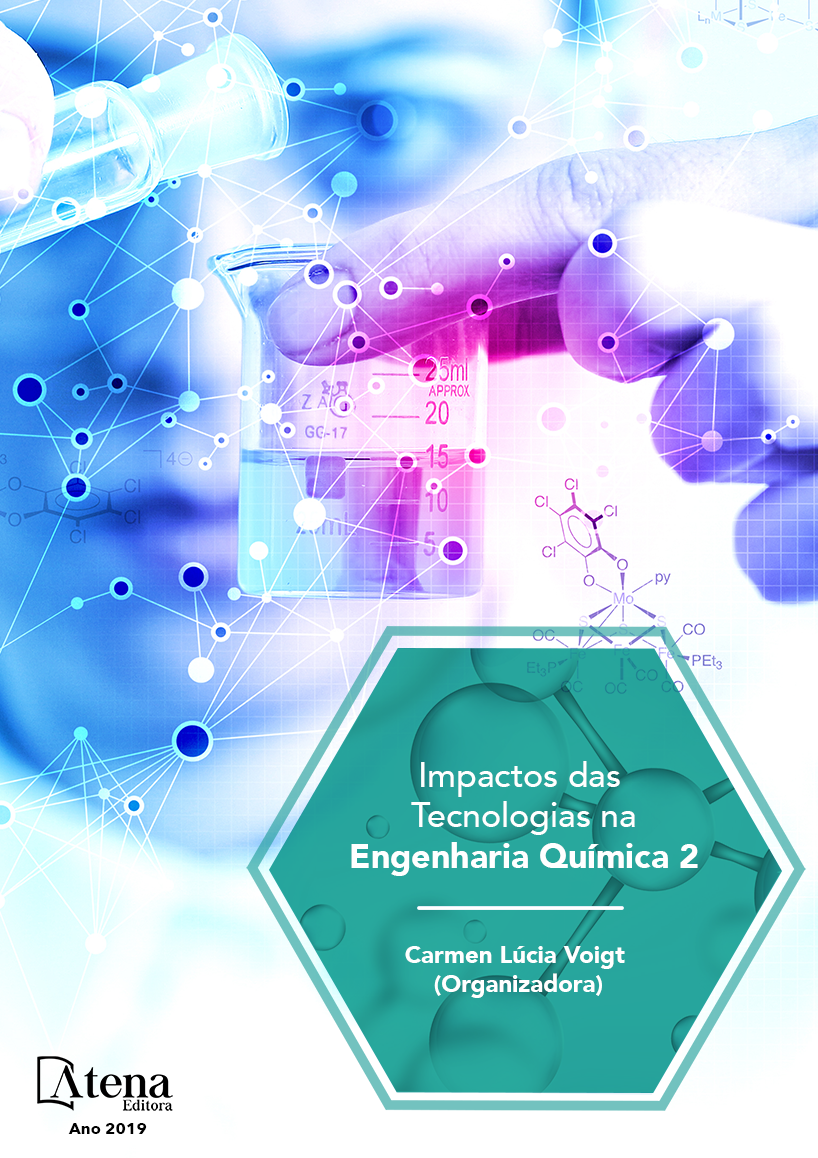
CARACTERIZAÇÃO E TRATAMENTO, EM ESCALA INDUSTRIAL, DO LICOR NEGRO GERADO PELA ETAPA DE DESLIGNIFICAÇÃO DO ALGODÃO
Celulose é uma matéria-prima
utilizada mundialmente em várias aplicações
industriais, dentre elas na produção de tecidos,
tintas, fibras e explosivos. Para produzir
explosivos, reage-se a celulose com uma mistura
ácida para obter a nitrocelulose e esta associada
a outros materiais fornece diversos tipos de
explosivos: pólvoras, dinamites, propelentes e
outros. O processo de obtenção da Nitrocelulose
envolve várias etapas, dentre elas a separação
mecânica do algodão, tratamento químico:
deslignificação e branqueamento, e nitração
da celulose. A etapa de deslignificação gera o
licor negro, um efluente tóxico e com elevadas
carga orgânica e cor. As principais análises de
caracterização nos efluentes in natura e tratado
foram pH, cor, COT, DQO, DBO, sólidos e
toxicidade. O efluente in natura apresentou pH
de 12,4, cor de 27.065 UC, DQO de 7.615 mg/L,
DBO de 4.413 mg/L, COT de 2.455 mg/L, ST
de 8.613 mg/L, STF de 3.845 mg/L e STV de
4.7686 mg/L. Após a caracterização, o efluente
foi tratado quimicamente, em escala industrial,
seguido de tratamento biológico, em escala
piloto. A integração de processos possibilitou
reduzir a DQO em 97%, a DBO em 99%, o COT
em 97%, bem como não foram detectados níveis
de toxicidade no efluente tratado, indicando que
o sistema de tratamento integrado é promissor
para remediação do licor negro.
CARACTERIZAÇÃO E TRATAMENTO, EM ESCALA INDUSTRIAL, DO LICOR NEGRO GERADO PELA ETAPA DE DESLIGNIFICAÇÃO DO ALGODÃO
-
DOI: 10.22533/at.ed.36419030410
-
Palavras-chave: Efluente. Licor negro. Deslignificação. Nitrocelulose. Explosivo
-
Keywords: Effluent. Black liquor. Delignification. Nitrocellulose. Explosive
-
Abstract:
Cellulose is a raw material used
worldwide in several industrial applications,
among them in the production of fabrics,
fibers and explosives. To produce explosives,
the cellulose is reacted with an acidic mixture
to obtain the nitrocellulose and this one
associated with other materials supplies several
types of explosives: gunpowder, dynamites,
propellants and others. The process of
obtaining Nitrocellulose involves several steps,
among them the mechanical separation of the
cotton, chemical treatment: delignification and
bleaching, and nitration of the cellulose. The
delignification step generates the black liquor,
a toxic effluent with high organic load and color.
The main characterization analyzes in natura and treated effluents were pH, color,
TOC, COD, BOD, solids and toxicity. The in natura effluent presented pH of 12.4,
color of 27,065 UC, COD of 7,615 mg/L, BOD of 4,413 mg/L, TOC of 2,455 mg/L, TS
of 8,613 mg/L, TFS of 3,845 mg/L and TVS of 4,7686 mg/L. After characterization, the
effluent was chemically treated by industrial scale, followed by biological treatment,
by pilot scale. The integration of processes made it possible to reduce COD by 97%,
BOD by 99%, TOC by 97%, and no toxicity levels were detected in the treated effluent,
indicating that the integrated treatment system is promising for the remediation of black
liquor.
-
Número de páginas: 15
- Flávio Teixeira da Silva
- Teresa Cristina Brasil de Paiva
- LUCRÉCIO FÁBIO DOS SANTOS


